 This article on Staffordshire Bull Terriers is part of a series to highlight the Big Picture of health, welfare and breeding and to help develop Globally Relevant Integrated Health Profiles (GRIHPs) for many breeds. See IPFD's Get a GRIHP! on Breed Health Initiative
This article on Staffordshire Bull Terriers is part of a series to highlight the Big Picture of health, welfare and breeding and to help develop Globally Relevant Integrated Health Profiles (GRIHPs) for many breeds. See IPFD's Get a GRIHP! on Breed Health Initiative
There are many others doing great work to advance health, well-being, and welfare in this wonderful breed. We reference and link to terrific work, developments, reports, and research from the UK, USA, Sweden, Finland, and more below. Thanks to all of those working on behalf of Staffordshire Bull Terriers.
This is a 'living document' - so if anyone has more material to share or point us to - please let us know!
 Table of Contents
Table of Contents
Breed at a glance
 The Staffordshire Bull Terrier, Staffie, originates from mastiff-type fighting dogs. It became an officially recognized breed in the UK in 1935. Todays Staffie is a loveable, energetic, affectionate and humorous dog. It is social, active and playful. Explicit fears or aggression are rare in the breed. The breed standard describes character as “Traditionally of indomitable courage and tenacity. Highly intelligent and affectionate especially with children. Bold, fearless and totally reliable.”
The Staffordshire Bull Terrier, Staffie, originates from mastiff-type fighting dogs. It became an officially recognized breed in the UK in 1935. Todays Staffie is a loveable, energetic, affectionate and humorous dog. It is social, active and playful. Explicit fears or aggression are rare in the breed. The breed standard describes character as “Traditionally of indomitable courage and tenacity. Highly intelligent and affectionate especially with children. Bold, fearless and totally reliable.”
Staffies seek human company and don’t do well in kennels. The dogs are at their best as pets in active families. They don’t necessarily fit in big packs. Smooth coat and compact size also make Staffies ideal pets in cities and apartments provided opportunities for daily exercise are made available.
Key Health Conditions
Summary: Screening for inherited cataracts and L-2-Hydroxyglutaric Aciduria (L-2-HGA) is required or recommended by every Staffordshire Bull Terrier Club. Orthopedic conditions and other eye conditions mentioned below have been reported in this breed; screening results are available.
-
Allergies and Atopy - conditions which may require lifetime management
-
Eye conditions
-
Inherited Cataracts - DNA Test - early onset - progressive to blindness
-
Persistent Hyperplastic Primary Vitreous (PHPV), also known as Persistent Hyperplastic Tunica Vasculosa Lentis (PHTVL) - Detected in an eye exam; dogs with grades 2-6 of this condition should not be bred.
-
Distichiasis and Entropion (Eyelashes and lids)
-
Orthopedic conditions
-
Cruciate Ligament injury
-
Elbow problems
-
Patella Luxation
-
Hip Dysplasia
-
Brachycephalic Obstructive Airway Syndrome (BOAS) in some short-muzzled dogs
-
Epilepsy
-
Neurometabolic disorder
-
L-2-HGA: DNA Test - typically an early onset, effects include epileptic seizures, "wobbly" gait, tremors, and muscle stiffness as a result of exercise or excitement. This is a progressive neurological disease; however, symptoms can be successfully managed with affected dogs potentially living a normal lifespan - severity of symptoms is variable which may affect lifespan.
Comment: these conditions have been noted as occurring in the breed; breeding dogs should be health/behaviour tested for the conditions mentioned. See more below.
What do caretakers need to know
 Well bred SBTs are headstrong, athletic, stable, confident dogs with excellent judgment; these dogs need supervision and training. Their high energy level means daily exercise is required. The dogs require socialization when they are pups. Some may show aggression towards other dogs and may possess a strong prey drive. The dogs can jump/get over or dig under fences; and when young, the pups like to chew. The dogs are also known as "Nanny dogs" as if the pups are properly raised, they make excellent, devoted family dogs with an affinity towards watching over children. The 'estimated' lifespan of this robust breed is >10-14 years.
Well bred SBTs are headstrong, athletic, stable, confident dogs with excellent judgment; these dogs need supervision and training. Their high energy level means daily exercise is required. The dogs require socialization when they are pups. Some may show aggression towards other dogs and may possess a strong prey drive. The dogs can jump/get over or dig under fences; and when young, the pups like to chew. The dogs are also known as "Nanny dogs" as if the pups are properly raised, they make excellent, devoted family dogs with an affinity towards watching over children. The 'estimated' lifespan of this robust breed is >10-14 years.
Statistics and Health Strategies
Population Statistics

US: AKC: Breed rank for Staffordshire Bull Terriers - 2021 # 75; prior year ranks were from # 80 - # 82.
Note the steady rise in SBT registrations from 2012-2021 in France.
Health and Longevity Statistics
Nordic Kennel Clubs list the breed in the Breed Specific Instructions (BSI): https://www.nkk.no/getfile.php/133181-1477564079/Dokumenter/RAS-dokument/BSI-BreedSpecificInstructions.pdf
Areas of risk in the Staffordshire Bull Terrier are:
1. Mouth: Lower canine teeth going up into the roof of the gum.
2. Breathing problems. For further information, see Appendix 2.
3. Coat and skin: Sparse coat and skin irritation.
Look for a correct bite, normal breathing and healthy skin
Agria - Swedish Breed Profiles
CONTEXT: For many years, Agria Animal Insurance, Sweden (Agria Djurförsäkring, Stockholm, Sweden) has supported veterinary research and provided statistics on diagnoses for health and life claims to Swedish breed clubs. See Breeds with Swedish Insurance Data and Agria Breed Profiles (where breeds are compared to All Breeds)! We recommend that you download the Agria Breed Profiles for the Staffordshire Bull Terrier and study them for full available information. Some excerpts are shown below! The great benefits of the Swedish insurance data are that they include almost 40% of the national population of dogs, so are very representative; note that animals at very old ages are likely under-represented. Most importantly, information is available on all insured dogs, not simply those who get sick or die. This allows calculation of population-based rates (expressed as events per 10,000 years-at-risk) as well as risks and proportions. Statistics are presented as overall morbidity (rate of one or more veterinary care events [VCE]) or mortality (death), by general diagnostic categories, and by specific diagnoses.

The top three causes of Staffie deaths in 2011–2016:
-
Locomotor (elbow dysplasia/dystrophy/degeneration)
-
Immunological (allergy/atopy)
-
Injury
The four main reasons for veterinary care in Staffies in 2011–2016:
-
Digestive (vomiting, diarrhea, gastroenteritis)
-
Locomotor (pain and other symptoms, elbow, spine, knee/patella)
-
Injury (skin, claw, knee, fracture/trauma skeletal)
-
Skin (trauma, tumours, otitis, dermatitis/pyoderma/folliculitis, allergy/atopy, itching)
Notes: knee injuries are often cruciate ligament ruptures which have a heritable component and are something to consider when breeding.
Extracts from Veterinary Care Events Agria 2011-2016
Relative Risk Morbidity of Staffordshire Bull Terrier compared to All Breeds: 1.25 (The risk in the breed is 1.25 times as high than for All Breeds.)



Extracts from Agria Breed Profile (Life) 2011-2016
Mortality - Relative Risk Mortality of Staffordshire Bull Terrier compared to All Breeds: 0.65 (The risk in the breed is much smaller than for All Breeds.)



Finland: Mortality Data 2012-2021
The average life expectancy according to the Finnish statistics is 10 years 1 month. The most common specified causes of death are tumor, cancer (at 10 years 5 months on average) and high age (13 years 6 months).
Worth noting: that although deaths due to cancer are high, the average age at death is relatively high (compared to some other high cancer breeds).

Breed-specific Breeding Strategies
Finland: Jalostuksen tavoiteohjelma (JTO) in Finnish:
Notes/aims:
-
balancing between mentality and behavioural traits and demands of modern society
-
follow and decrease eye diseases
-
follow and decrease hip dysplasia (estimated breeding values, EBVs, available)
-
reduce the incidents of allergies and skin issues like furunculosis
-
discover incidence of deafness in the breed
-
increase the screenings for elbow dysplasia and patella luxation
-
publish a list of tested dogs: L-2-hydroxyglutaric aciduria and hereditary cataract (HC-HSF4)
-
prevent increase of BOAS in the breed
Sweden: Rasspecifik avelsstrategi (RAS) in Swedish:
Notes/aims:
-
Use older dogs in breeding; follow population structure
-
Reduce the incidence of demodicosis, deafness and dystocia
-
Survey allergies in the breed and increase knowledge about atopy
-
Survey the prevalence of idiopathic epilepsy in the breed
-
All breeding animals must be DNA tested for L-2-hydroxyglutaric aciduria and hereditary cataract (HC-HSF4)
-
Increase screenings for hip and elbow dysplasia and eye disease
-
More attention to be paid to stifle problems
-
Avoid BOAS by training show judges
-
More BPH-tested dogs; BPH = Behaviour and personality description (Beteende – och Personlighetsbeskrivning Hund):
Norway: Rasespesifikk avlsstrategi (RAS) in Norwegian:
Notes/aims:
-
Secure wide enough breeding population
-
Follow up dental and bite issues
-
Test for L-2-hydroxyglutaric aciduria and hereditary cataract (HC-HSF4)
-
Follow situation of allergies and skin problems in breed
-
Avoid decreasing the length of muzzle to prevent BOAS
-
Increase communication and honesty between breeders
France: GRILLE DE COTATION | Test de Caractère T.C1 & Test de Comportement T.C.2:
Netherlands
Denmark: Racespecifik AvlsStrategi (RAS) in Danish:
HGTD DNA Tests for Staffordshire Bull Terriers
The Harmonization of Genetic Testing for Dogs (HGTD) Basics: The HGTD Searchable Database - Search by Breed, Search by Disease / Test and Search by Genetic Test Provider (GTP) / Lab + Genetic Counselling Resources. HGTD catalogs information provided voluntarily from genetic test providers (GTPs) including information on their company and services, quality measures and expertise, tests offered and more. As of January 2021, the HGTD Database includes 82 academic and commercial genetic test providers (GTPs) in 22 countries. Our searchable genetic phenes (phenes = characteristics/genetically controlled feature) database currently holds information on 300+ phenes across all breeds/types and provides information on each phene: links to the Online Mendelian Inheritance in Animals database (OMIA), gene + mutations, a simple and advanced disease description, inheritance details, links to original publications, patents/licenses, comments from the original researchers/experts on application, and breed specific information (such as research/validation) - where possible. Breed Relevance Ratings (BRR) support evidence-based usage and application of genetic tests. The HGTD database relevance rating indicates the level of available evidence supporting the application of a specific genetic test for a specific breed/type. Currently, the relevance rating is based on a wide variety of evidence sources. This includes peer-reviewed research papers, recommendations from the original researchers/test developers, input from additional experts including veterinary specialists, and breed experts. It is hoped that, by being more informative about what we currently know or do not know about a specific test for a specific breed, that dog health advisors and owners can make more informed decisions. Remember, this Breed Relevance Rating is not everything we need to know about the disease or characteristic; it is focused on the genetic test.
HGTD Staffordshire Bull Terrier
Summary
Generally considered a robust breed, there are a small number of important breed-specific genetic tests for the SBT and a handful of trait tests that may be important, particularly for breeding considerations. Where possible, I have noted when a specific test is a common requirement or recommendation by breed clubs. Some of the genetic tests are broadly associated with “bully” breeds, and may have associations with undesirable conformation (e.g. “screw tail”). Owners or breeders of SBT crosses may also benefit from these genetic tests.
♦ BIG PICTURE THINKING ♦Please take into consideration - Most of the conditions with genetic tests are rare in the general population, but valuable for breeders to use to efficiently reduce risks while supporting good genetic diversity in the breed as a whole. See the Genetic Diversity section below. Also be aware that there are many DNA tests that are available for ALL breeds, that while the test itself is valid, the condition may not be a major health concern or included in health strategies for every breed. See the HGTD for a full list of DNA tests including "Trait" and "Parentage" tests.
Test: L-2-Hydroxyglutaric Aciduria (L-2-HGA)
BRR: 
HSP comment: This disease can have very serious welfare impacts on the dogs, including behavioral changes, ataxia, seizures, and dementia. While not universally common, reports from breed clubs have indicated that this variant has been found in apparently unrelated bloodlines and is therefore generally recommended or required as a pre-breeding test to irradicate the risk of this condition in the breed.
Test: Primary Hereditary Cataract (PHC)
BRR: 
HSP comment: This form of early onset cataract is not present at birth, and therefore can be missed by early/puppy clinical eye screening. Total blindness may occur by 2-3 years of age. This test was originally developed in collaboration with SBT breed clubs in the UK, adding additional confidence in the breed-association with this test. Thoughtful usage of this test could effectively eliminate this disease in the breed.
In addition to this genetic test, please note that there are other breed-associated eye diseases that currently are assessed by clinical examination only.
Test: Screw tail, Robinow-like syndrome
BRR: 
HSP comment: Recent research (2021) builds on the original research into the DVL2 variant that indicates not only risk for “screw-tail” and other vertebral anomalies but may also increase risks associated with brachycephalic obstructive airway syndrome and congenital heart defects. Several breeds known to be at risk for screw tail and/or having a brachycephalic phenotype were involved in the extensive studies. How common DVL2 was found in the breeds ranged from 18-50%, with a few breeds potentially fixed for the mutation. The SBT is not yet “fixed” for this mutation across tested populations. Risks of clinical disease and severity vary by breed and individual dogs. The recessive inheritance appears to vary by breed in penetrance, with some breeds having autosomal recessive inheritance and others appearing to be autosomal recessive with incomplete penetrance. Dogs who have this variant may benefit from additional breeding advice and recommendations from their genetic test provider and/or breed health specialist/veterinary specialist.
Other breed-specific tests available, relevance unknown:
Degenerative myelopathy, coat colour dilution MLPH-related, coat colour extension
Comment on trait testing for the SBT:
There are a number of coat-colour trait tests available to the SBT and in common use. It should be noted that tests for dilution, MLPH-related may also be informative of skin issues that are sometimes associated with this variant. Some of the coat colour tests also indicate coat colours and types that are commonly not to breed standard or undesirable.
For the most up to date information please search for Staffordshire Bull Terrier in HGTD.
Health Screening Tests for Staffordshire Bull Terriers
UK
The Kennel Club: Breed Watch: Points of concern for the Staffordshire Bull Terrier are:
-
Dogs showing respiratory distress including difficulty in breathing or laboured breathing
-
Misplaced lower canine teeth
Staffordshire bull terrier Priority Health Tests
Litter screening for PHPV – Persistent hyperplastic primary vitreous (a congenital condition (present at birth) that is not progressive) is recommended by the KC and breed club.
UK RESEARCH
Extracts From: Large-scale survey to estimate the prevalence of disorders for 192 Kennel Club registered breeds
B. M. Wiles 1* , A. M. Llewellyn-Zaidi 2 , K.M. Evans 1,3 , D. G. O’Neill 4 and T. W. Lewis 1,3
Table 1 Number of unique individual dogs for which responses were received and approximated response rate (from total number registered from 2004–13 inclusive) for all breed
There were 797 Staffordshire Bull Terriers included in the study representing 1.85% of the total registered.
Table 4 The number of unique live dogs surveyed, number of dogs with one or more reported incident of disease/condition, and clear (no reported disease/condition), affected (≥1 reported disease/condition) proportion and median age (years), for breeds with reports on ≥200 unique live dogs (n = 41 breeds)
|
Breed
|
n dogs
|
n dogs with ≥1 condition
|
Clear prop
|
Affected prop
|
Median age (years)
|
|
Staffordshire Bull Terrier
|
797
|
295
|
62.99%
|
37.01%
|
4.76
|
 Fig. 2 from the study is a matrix showing significantly higher (red) or lower (green) within breed prevalence than the across breeds mean prevalence of the n = 101 most commonly reported conditions (≥50 reports, rows) across the n = 41 breeds with the most responses on unique live dogs (≥200 dogs, columns). A full size version of this figure, as well as a black and white version is available in Additional files 5 and 6. The most commonly reported conditions for the SBT are shown below and in the extracted graphic.
Fig. 2 from the study is a matrix showing significantly higher (red) or lower (green) within breed prevalence than the across breeds mean prevalence of the n = 101 most commonly reported conditions (≥50 reports, rows) across the n = 41 breeds with the most responses on unique live dogs (≥200 dogs, columns). A full size version of this figure, as well as a black and white version is available in Additional files 5 and 6. The most commonly reported conditions for the SBT are shown below and in the extracted graphic.
-
Alopecia/Baldness
-
Arthritis
-
Corneal ulcer
-
Demodex infestation
-
Hypersensitivity (allergic)skin disorder
-
Patellar luxation/ slipping kneecap
-
Unspecified Respiratory
-
Unspecified Skin, Ear or Coat
Finland
Mandatory health examinations (PEVISA) for parents in litter registration: eye examination and hip dysplasia screening.
Combination of two dilute coloured dogs (registered as blue or blue fawn) is not allowed.
Mental description (Mentalbeskrivning Hund, MH): 23 dogs attended.
Character test:

Key
LTE = Approved test
LTE0 = Failed test
LTE- = Interrupted test
Eye diseases - most of the examined dogs are healthy. Most common findings are:
-
Distichiasis,
-
Cortical cataracts,
-
PHTVL/PHPV, mostly grade 1, and
-
Posterior polar cataracts.

Hip dysplasia – approximately 40% of screened dogs have normal (A) or borderline (B) hip joints.

Elbow dysplasia – over 80% of screened dogs have normal elbow joints.

Patella luxation – out of 1553 tested dogs, 22 dogs had luxation during the years 2012-2022, 14 of them grade 1.
Note: Patella luxation statistics don’t show cruciate ligament problems.
Sweden
No mandatory health examinations for parents in litter registration.
Mental description (Mentalbeskrivning Hund, MH):

Eye diseases - most common findings are:
-
Distichiasis/cilia,
-
Hereditary cataracts,
-
Retinopathies, and
-
PHTVL/PHPV, mainly grade 1.

Hip dysplasia – 50-60% of screened dogs have normal (A) or borderline (B) hip joints.

Elbow dysplasia – over 80% of screened dogs have normal elbow joints. Others mainly have mild arthrosis.

DNA testing - L2-hydroxyglutaric aciduria has been tested from 9 dogs; all were free.
Norway
No mandatory health examinations for parents in litter registration.
Eye diseases - most common findings are:
-
Distichiasis / Cilia,
-
PHTVL/PHPV, and
-
Cataracts.

Hip dysplasia – 40-50% of screened dogs have normal (A) or borderline (B) hip joints.

Elbow dysplasia – over 80% of screened dogs have normal elbow joints.

Health survey 2021, issues noted:
-
Eye diseases
-
Hip dysplasia
-
Elbow dysplasia
-
Patella luxation
-
Skeletal abnormalities (kinked tail, spondylosis)
-
Epilepsy
-
L-2 hydroxyglutaric aciduria
(Source: https://norskterrierklub.no/Userfiles/Sites/files/SBT/2022/Helseundersokelsen2021.pdf)
France
Mandatory health checks for parents in litter registration:
-
DNA test L-2-hydroxyglutaric aciduria; dog should be ‘clear’
-
DNA test for hereditary cataract (HC-HSF4); dog should be ‘clear’
Character test TAN (Test d’aptitude Naturel) 5 points each part https://www.staffordshirebullterrierclubdefrance.com/le-tan
Test includes:
-
Social behaviour towards people, failure rejects the test
-
Social behaviour towards other dogs, failure rejects the test
-
Greeting other participant, failure rejects the test
These three parts create the character test that is needed for the Champion title. Dog needs to obtain at least 12 points. To get TAN, dog needs more than 18 points. Next two parts don’t lead to rejection of the test:
-
Test of reaction to an unexpected situation, umbrella, loud and sudden noise
-
Gunshot noise test (timidity and aggression is noted)
Other recommended health examinations/tests in France are:
-
Colour dilute alopecia, also known as follicular dysplasia of black fur.
-
Patella luxation
-
Deafness
-
Hip and elbow dysplasia
Grille de Selection:
https://www.staffordshirebullterrierclubdefrance.com/_files/ugd/5a5ef1_b115a4f72cbb425abdc3848b78590333.pdf
US
See OFA for SBT recommended tests: https://ofa.org/chic-programs/browse-by-breed/?breed=SBT
-
Hip Dysplasia - One of the following: OFA Evaluation, PennHIP Evaluation
-
Elbow Dysplasia - OFA Evaluation
-
ACVO Eye Exam - Eye Examination once 12 months old. Results registered with OFA
-
L2HGA DNA Test - DNA based L2HGA test from an approved laboratory; results registered with OFA
-
Hereditary Cataracts - DNA Test - DNA based cataract test from an approved lab
Patellar Luxation (Optional but recommended) - OFA Evaluation
Cardiac Evaluation (Optional but recommended) - Congenital Cardiac Exam, Advanced Cardiac Exam, Basic Cardiac Exam
Various reports and statistics are available from OFA via links on the SBT page. Or to obtain disease-specific stats see: https://ofa.org/diseases/disease-statistics/
Also see the Blue Book pgs. 997-999 for eye information and examination statistics.
Netherlands
Requirements for parents in litter registration (VFR; Vereiningsfokreglement) by Dutch Kennel Club (Raad van Beheer) and breed clubs: https://www.houdenvanhonden.nl/fokken-met-je-hond/VFR
Netherlands:
National club: https://www.sbtcn.nl/
In breeding regulations: https://www.sbtcn.nl/verenigingsfokreglement-28-02-2018/ the following issues are mentioned as breed risks:
-
L-2 hydroxyglutaric aciduria
-
Hereditary cataract
-
Epilepsy
-
Congenital deafness or blindness
-
Harelip and cleft palate
-
Inverted canines
-
Patella luxation
-
Kinked tail
Recommended breeding practices are described in club’s website: https://www.sbtcn.nl/puppy-checklist/
Recommended health examinations include hip and elbow dysplasia, patella luxation and an eye examination according to European College of Veterinary Ophthalmologists (ECVO; ecvo.org).
Germany
The breed is mentioned in VDH’s Breed Specific instructions: https://www.vdh.de/fileadmin/media/ueber/downloads/satzung/2022/BSI-EN-20220705.pdf (pg. 16)
Staffordshire Bull Terrier
Pay attention to the following areas in particular:
1. Jaws/Teeth
Lower canine teeth going up into the upper gum (base narrow canines).
2. Skin/Coat
Sparse coat and skin irritation.
Look for correct bite, correct length of muzzle, normal breathing and healthy skin.
In Germany there are two registering clubs:
Deutscher Club für Bullterrier e.V. https://www.dcbt.de/ and Gesellschaft der Bullterrier-Freunde e.V. https://www.gb-f.de/.
Mandatory examinations/requirements with bold:
|
Gesellschaft der Bullterrier-Freunde
|
Deutscher Club für Bullterrier
|
|
Health rules can be downloaded (GBF-Zuchtordnung): https://www.gb-f.de/downloads.html
|
Health rules can be downloaded (Zuchordnung): https://www.dcbt.de/formulare-ordnungen/
|
|
DNA test for HC* and L2-HGA*
|
DNA test for HC* and L2-HGA*
|
|
Not allowed to combine dilute colours
|
|
|
Deafness
|
Deafness, BAER-test
|
|
Eye examinations (PLL*, cataract, PRA*, RD*, glaucoma, entropion and ectropion)
|
Eye diseases (PLL*, cataract, PRA*, entropion, ectropion and glaucoma)
|
|
Skin conditions
|
Skin conditions (generalised demodicosis)
|
|
Patella luxation
|
Measuring (not over 42.5 cm high)
|
|
Hip and elbow dysplasia
|
Breed warden litter check, announced latest 3 days after birth for the first litter
|
|
Heart ultrasound
|
|
|
Kidney screening (PKD*)
|
|
*HC = hereditary cataract; L2-HGA = L-2 hydroxyglutaric aciduria; PLL = primary lens luxation; PRA = progressive retinal atrophy; RD = retinal dysplasia; PKD = polycystic kidney disease
Staffordshire Bull Terriers - Health Screening Summary - by country
The table below represents several health conditions present in the Staffordshire Bull Terrier breed as acknowledged by Kennel and Breed Clubs. Countries listed include the United Kingdom, United States, Finland, Sweden, Norway, the Netherlands, Germany and France. The conditions represented have tests or screening protocols available. There are, of course, other health conditions that should be taken into account by breeders, owners and veterinarians.
Key:
R1-Mandatory for registration
R2-Recommended
R3-Recognized
|
Condition
|
UK
|
US
|
FI
|
SW
|
NO
|
NL
|
DE
|
FR
|
|
Hip Dysplasia
|
|
R2
|
R1
|
R2
|
R2
|
R2
|
R2
|
R2
|
|
Elbow Dysplasia
|
|
R2
|
R2
|
R2
|
R2
|
R2
|
R2
|
R2
|
|
Eye Exam
|
R2
|
R2
|
R1
|
R2
|
R2
|
R2
|
R2
|
R2
|
|
L2-HGA = L-2 hydroxyglutaric aciduria DNA test
|
R2
|
R2
|
R2
|
R2
|
R2
|
R1
|
R1
|
R1
|
|
HSF4 HC DNA test
|
R2
|
R2
|
R2
|
R2
|
R2
|
R1
|
R1
|
R1
|
|
Deafness
|
|
R3
|
R3
|
R2
|
R2
|
R2
|
R2
|
R2
|
|
BOAS
|
R3
|
R3
|
R2
|
R2
|
R2
|
R2
|
|
|
|
Cardiac Screening
|
|
R2
|
|
|
|
|
|
|
Genetic Diversity - Staffordshire Bull Terriers
Do not confuse the Staffordshire Bull Terrier with the American Staffordshire Terrier or with the Pit Bull! The breed shares common ancestors with the bulldog, the American Staffordshire terrier, the pit bull terrier, and the bull terrier.
UK:KC: inbreeding Coefficient Lookup
The Finnish Breed Club, Staffordshirenbullterrieriyhdistys ry - see the JTO and Database for diversity information and management tactics. The Nordic SBT clubs track genetic diversity - information is available in the RAS documents.
The database at SBTpedigree.com offers COI calculation on all registered dogs in the database.
SBTpedigree.com article: Staffordshire Bull Terrier "Lines" of ancestors.

Illustrated Standards
The Staffordshire Bull Terrier Interpretation & Illustration of the Written Breed Standard v. 13.7
SBTCA Illustrated Standard
Domarkompendium för staffordshire bullterrier -- Sammanställt inför Svenska Terrierklubbens domarkonferens 2021
References and Resources
 DogWellNet Resources
DogWellNet Resources
DWN Pedigree Dogs DB: Staffordshire Bull Terrier
HGTD Staffordshire Bull Terrier
Agria Djurförsäkring Breed Profiles
2006-2011
2011-2016
Research
Pegram, C., Wonham, K., Brodbelt, D.C. et al. Staffordshire Bull Terriers in the UK: their disorder predispositions and protections. Canine Genet Epidemiol 7, 13 (2020). https://doi.org/10.1186/s40575-020-00092-w
Abramson, Platt, Jakobs, et al. 2008. L-2-Hydroxyglutaric Aciduria in Staffordshire Bull Terriers. https://onlinelibrary.wiley.com/doi/10.1111/j.1939-1676.2003.tb02477.x
Mansour, Lucot, Konopelski, et al. 2018. Whole genome variant association across 100 dogs identifies a frame shift mutation in DISHEVELLED 2 which contributes to Robinow-like syndrome in Bulldogs and related screw tail dog breeds. PLoS Genet 14:e1007850. https://doi.org/10.1371/journal.pgen.1007850
Niskanen, Reunanen, Salonen, et al. 2021. Canine DVL2 variant contributes to brachycephalic phenotype and caudal vertebral anomalies. Hum Genet 140, 1535–1545. https://doi.org/10.1007/s00439-021-02261-8
IPFD and The World Small Animal Veterinary Association
See our series of Meet the Breed articles in the WSAVA Bulletin and associated Get a GRIHP! Articles on DogWellNet.com:
-
Welsh Corgi
-
Dachshund
-
French Bulldog


-
Australian Shepherd
-
Saluki
-
Golden Retriever
-
Bernese Mountain Dog
-
Black Russian Terrier
-
Pug
-
Finnish Spitz
-
Rhodesian Ridgeback
-
Rottweiler
-
Whippet
-
Belgian Shepherd
-
English Bulldog
-
Irish Soft Coated Wheaten Terrier
-
Dalmatian
-
Border Terrier
-
Staffordshire Bull Terrier
-
Siberian Husky
-
Dobermann
-
Shih Tzu
-
English Setter
-
Beagle
-
Chihuahua
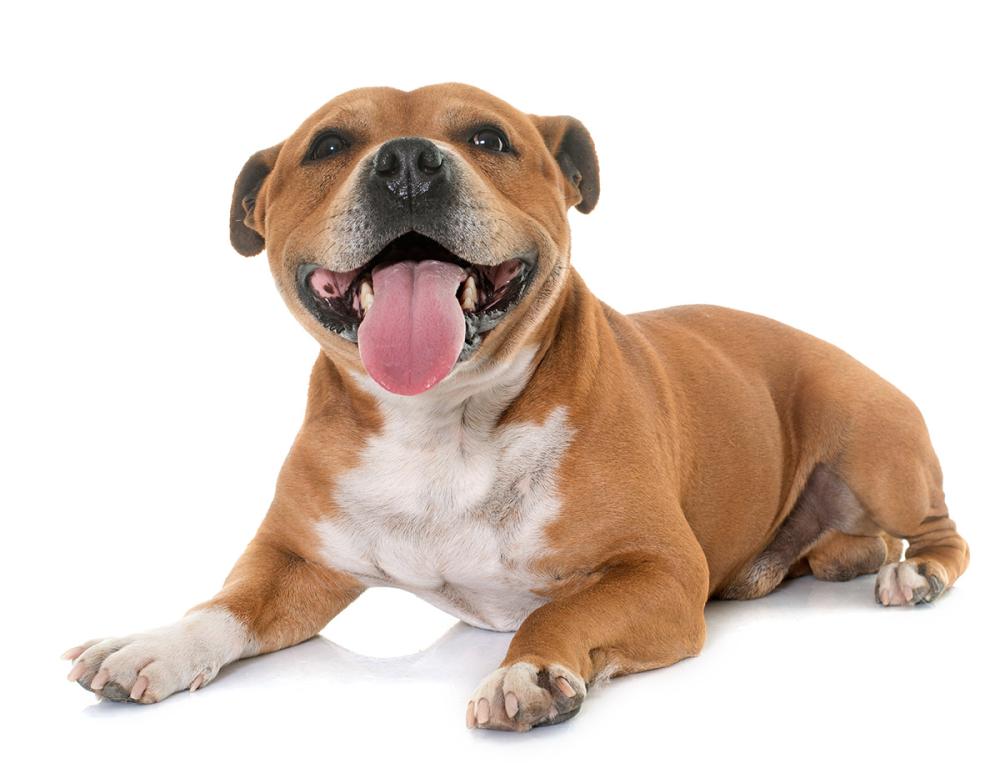 This article on Staffordshire Bull Terriers is part of a series to highlight the Big Picture of health, welfare and breeding and to help develop Globally Relevant Integrated Health Profiles (GRIHPs) for many breeds. See IPFD's Get a GRIHP! on Breed Health Initiative
This article on Staffordshire Bull Terriers is part of a series to highlight the Big Picture of health, welfare and breeding and to help develop Globally Relevant Integrated Health Profiles (GRIHPs) for many breeds. See IPFD's Get a GRIHP! on Breed Health Initiative
 Donate
Donate
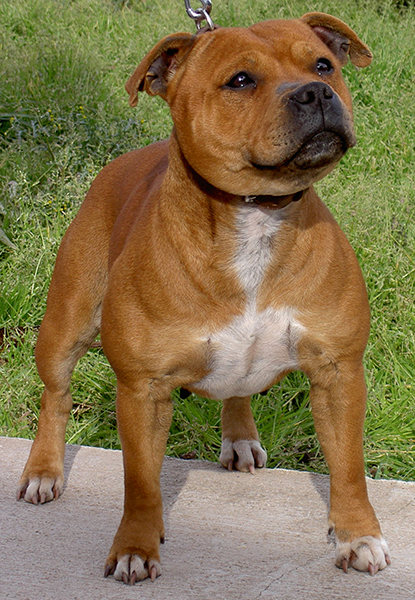 Table of Contents
Table of Contents
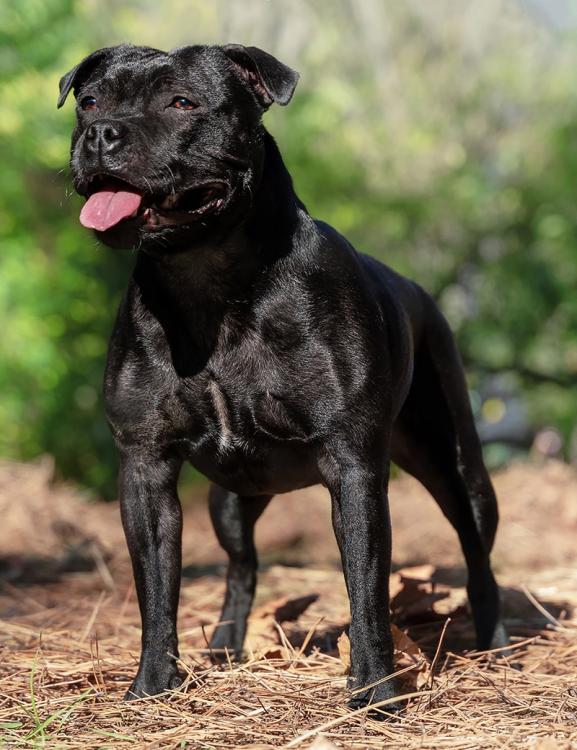
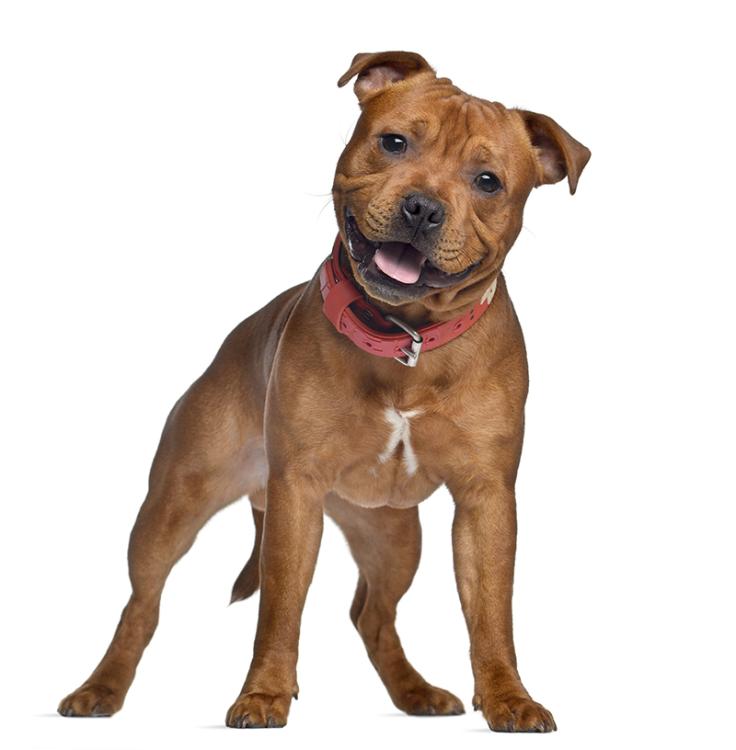
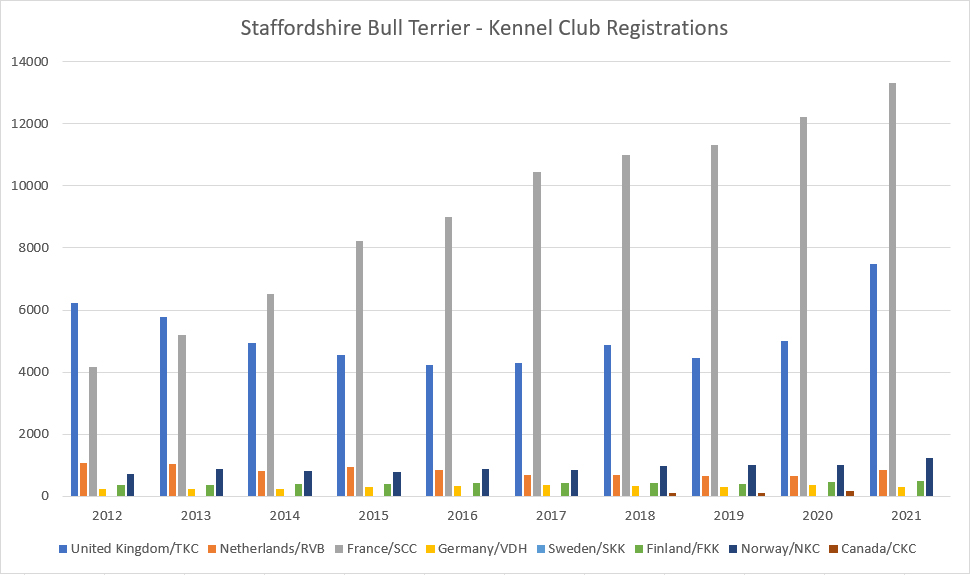

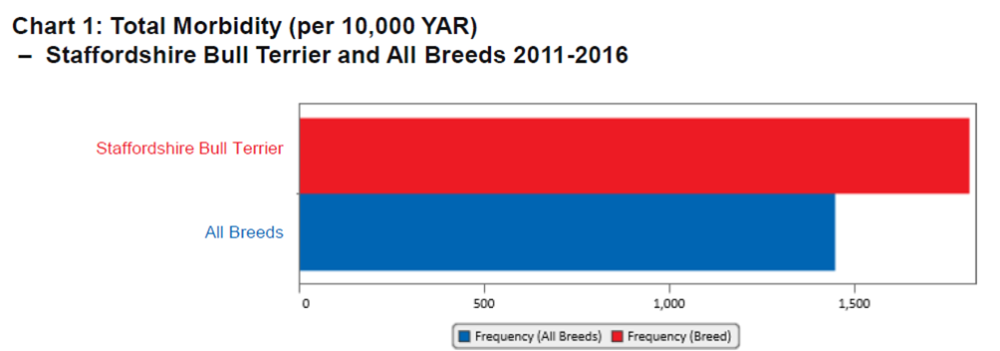
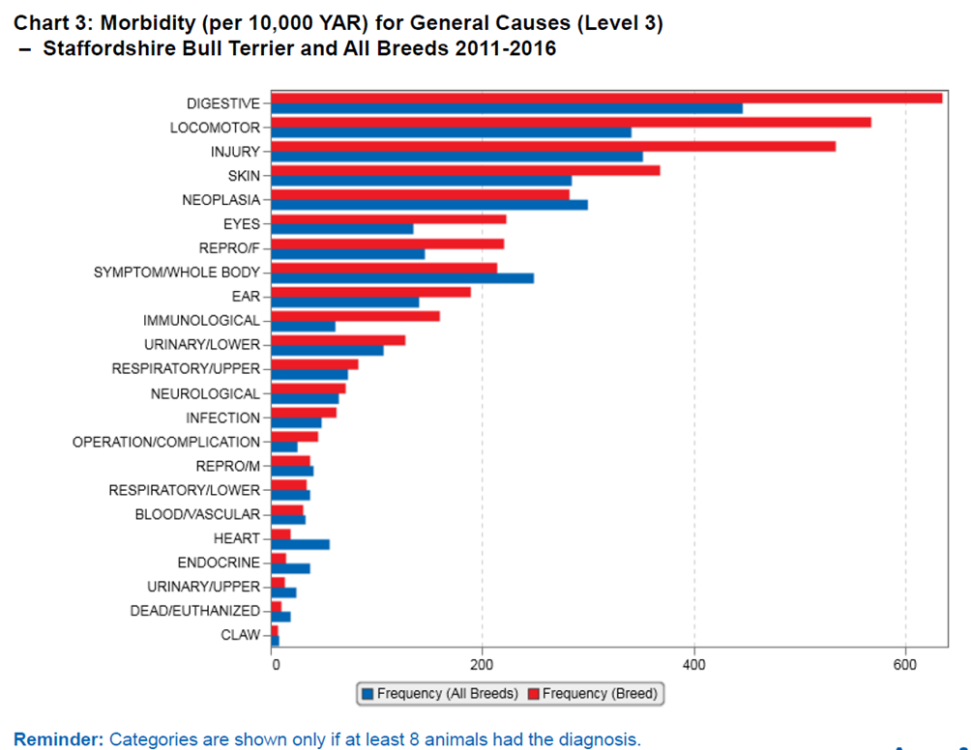

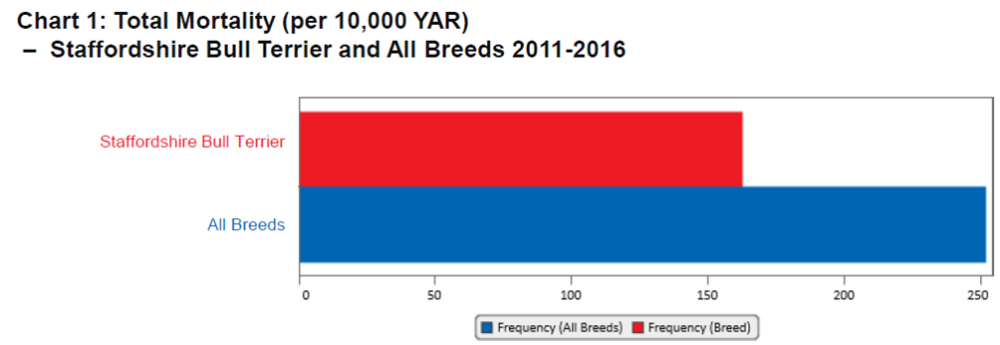
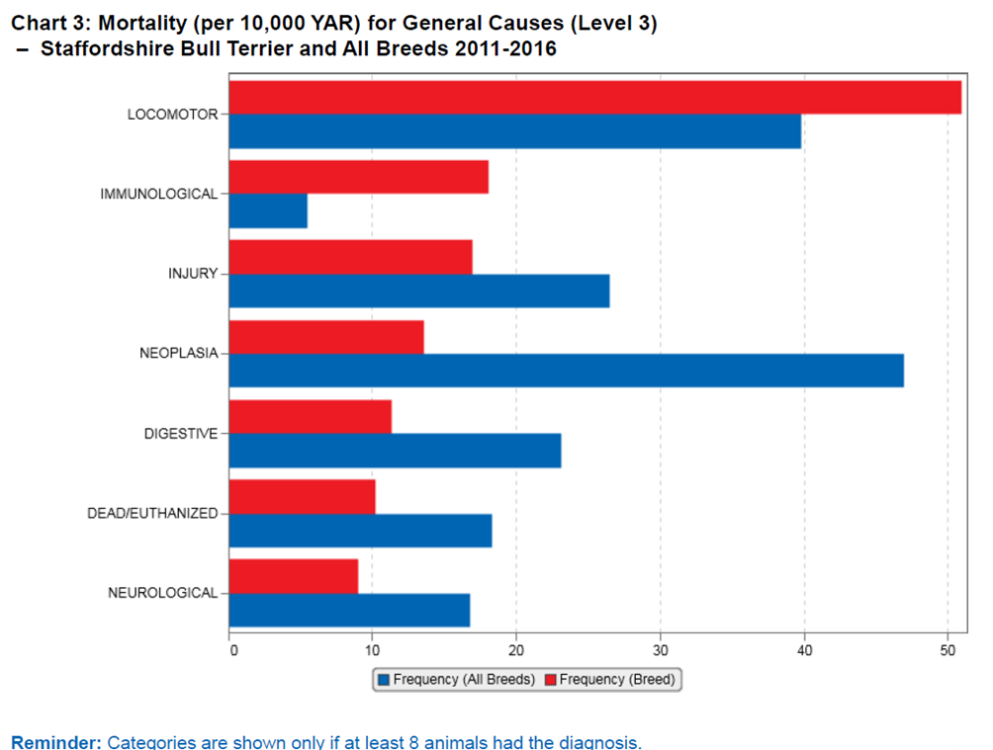
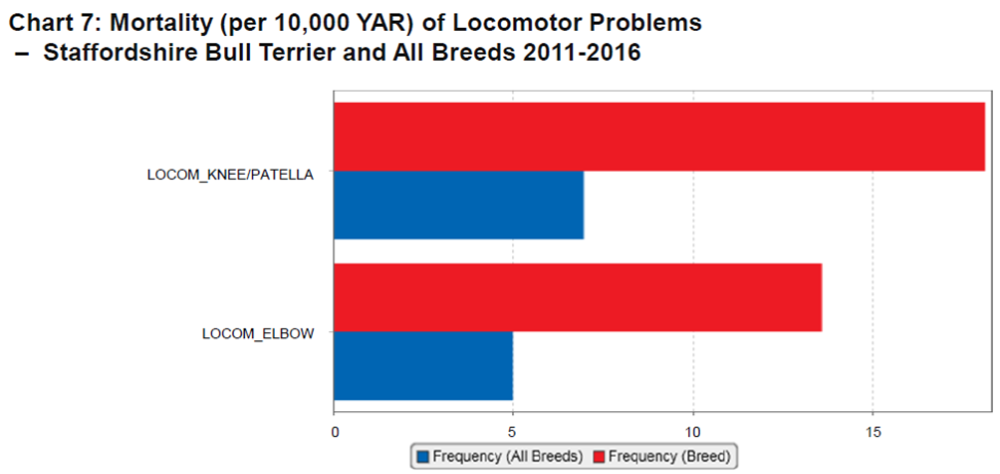
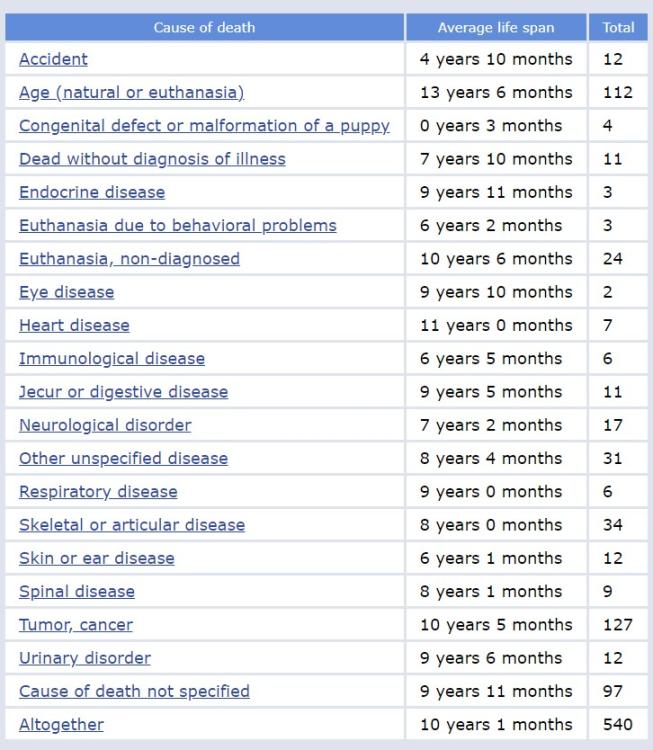
 Fig. 2 from the study is a matrix showing significantly higher (red) or lower (green) within breed prevalence than the across breeds mean prevalence of the n = 101 most commonly reported conditions (≥50 reports, rows) across the n = 41 breeds with the most responses on unique live dogs (≥200 dogs, columns). A full size version of this figure, as well as a black and white version is available in Additional files 5 and 6. The most commonly reported conditions for the SBT are shown below and in the extracted graphic.
Fig. 2 from the study is a matrix showing significantly higher (red) or lower (green) within breed prevalence than the across breeds mean prevalence of the n = 101 most commonly reported conditions (≥50 reports, rows) across the n = 41 breeds with the most responses on unique live dogs (≥200 dogs, columns). A full size version of this figure, as well as a black and white version is available in Additional files 5 and 6. The most commonly reported conditions for the SBT are shown below and in the extracted graphic.
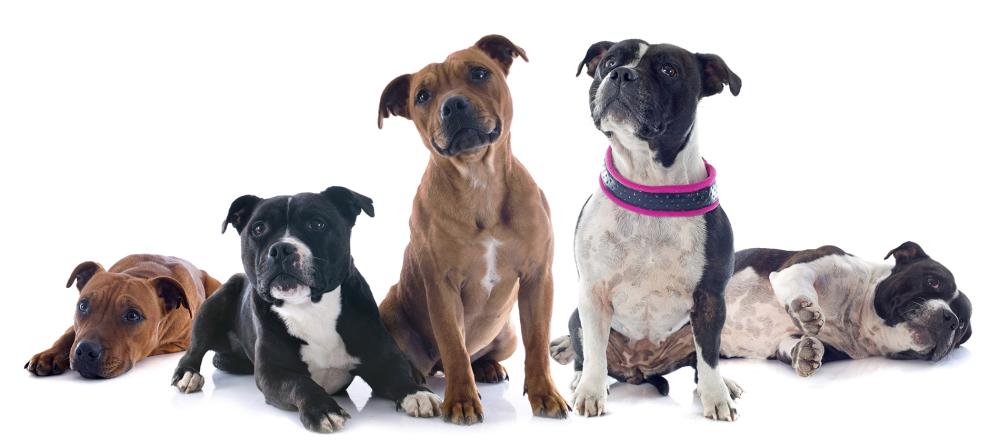


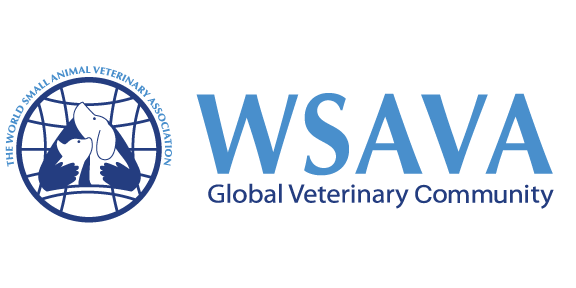
Recommended Comments
There are no comments to display.
Join the conversation
You can post now and register later. If you have an account, sign in now to post with your account.
Note: Your post will require moderator approval before it will be visible.